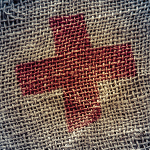With this information, treatment studies were set up utilizing careful statistical methods to determine how many individuals would need to be put at risk in order to determine if therapy was effective in preventing ARF. Two groups of patients were used, a treatment group and an untreated control. The treatment group received penicillin for ten days and the control group was only given symptomatic therapy. With 1,000 patients in each group, the statistical difference was unquestionable, with 32 cases of ARF in the control group and none in the treatment group. This remained the main control study to be done by the staff. Studies utilizing other antibiotics were done with essentially the same result. Surprisingly, the use of sulfonamides proved to be ineffective in preventing ARF.
While the seminal studies were the successful therapy of acute strep sore throat, many other studies were done during the seven-year period:
- More than 1,200 patients with ARF were observed and treated with extensive information on the natural history of the disease.
- Treatment studies showed that corticosteroids were more effective than acetylsalicylic acid in preventing heart valvular damage.
- Studies of epidemics at Red Lake Indian Reservation and Bainbridge Navy showed that AGN was related to certain types of strep (types 12 and 4), a fact previously unknown. This was a serendipitous discovery that served to elucidate the previous dilemma, which confronted us in the epidemiologic differences in the occurrence of ARF and AGN.
During the seven years that the Streptococcal Disease Laboratory functioned, data were accumulated on the streptococcus, strep sore throat, ARF, and AGN, much of which remained unreported because of time restraints on the staff. The comprehensive studies by the medical staff on this organism and its diseases left few areas to be studied. The information was such that the staff was given the Lasker Award for Group Medical Research in 1954.
One of the frequent visitors to the Strep Lab was T. Duckett Jones, MD. Dr. Jones had spent his career as medical director of the House of the Good Samaritan in Boston, a hospital for patients with ARF. He was acknowledged to be the world authority on clinical rheumatic fever and was best known for having developed the Jones Criteria for the diagnosis of ARF, which have been universally used as the basis for making the diagnosis. Over his years of observation while at the Good Sam, he accumulated data on ARF, which are invaluable to all of us.

